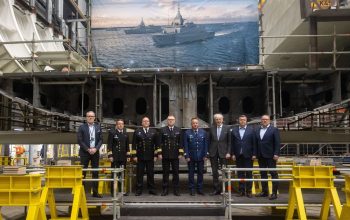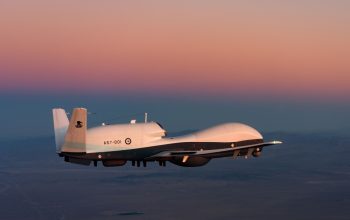The Boeing Co., St. Louis, Missouri, is awarded a $200,000,000 firm-fixed-price modification to a previously awarded contract. This modification procures critical long lead material and associated efforts in support of maintaining the full rate production timeline for the congressionally added F/A-18E/F aircraft. Work will be performed in various locations within the continental U.S. and is expected to be completed in June 2025. Fiscal 2022 aircraft procurement (U.S. Navy) funds in the amount of $200,000,000 will be obligated at the time of award, none of which will expire at the end of the current fiscal year. The U.S. Naval Air Systems Command, Patuxent River, Maryland, is the contracting activity.
The Boeing F/A-18E and F/A-18F Super Hornet are twin-engine, carrier-capable, multirole fighter aircraft variants derived from the McDonnell Douglas F/A-18 Hornet series. The F/A-18E single-seat and F/A-18F tandem-seat variants are larger and more advanced versions of the F/A-18C and D Hornet. The Super Hornet first flew in 1995, low-rate production began in early 1997 with full-rate production starting in September 1997. The Super Hornet entered fleet service with the United States Navy in 1999, replacing the Grumman F-14 Tomcat, which was retired in 2006; the Super Hornet has served alongside the original Hornet. In February 2023, Boeing announced plans to end production of the Super Hornet in 2025.

The Super Hornet is largely a new aircraft at about 20% larger, 7,000 lb (3,200 kg) heavier empty weight, and 15,000 lb (6,800 kg) heavier maximum weight than the original Hornet. The Super Hornet carries 33% more internal fuel, increasing mission range by 41% and endurance by 50% over the “Legacy” Hornet. The Super Hornet has an internal 20mm M61A2 rotary cannon and can carry air-to-air missiles, air-to-surface and a variety of other weapons. Additional fuel can be carried in up to five external fuel tanks and the aircraft can be configured as an airborne tanker by adding an external air-to-air refueling system.
In 2010, Boeing offered prospective Super Hornet customers the “International Roadmap”, which included conformal fuel tanks, enhanced engines, an enclosed weapons pod (EWP), a next-generation cockpit, a new missile warning system, and an internal infrared search and track (IRST) system. The EWP has four internal stations for munitions, a single aircraft can carry a total of three EWPs, housing up to 12 AMRAAMs and 2 Sidewinders. In 2007, Boeing stated that a passive Infrared Search and Track (IRST) sensor would be an available future option. The sensor, mounted in a modified centerline fuel tank, detects long wave IR emissions to spot and track targets such as aircraft; combat using the IRST and AIM-9X Sidewinder missiles is immune to radar jamming.















